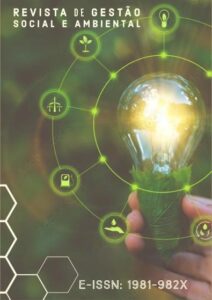Exciting Announcement: Publication in the Revista de Gestão Social e Ambiental
I am thrilled to share our latest publication in the esteemed Revista de Gestão Social e Ambiental. The paper, «Constructively Aligned Instructional Design for Oral Presentations,» is a collaborative effort with distinguished colleagues James Lipuma, and Jose Ernesto Malpica Rosendo. It’s an honor to be a part of this paper (Lipuma et al., 2024).
Paper Abstract:
In the paper «Constructively Aligned Instructional Design for Oral Presentations,» the authors explore the implementation and outcomes of the ‘General, Particular Specific’ (GPS) model as a framework for curriculum instructional design for oral presentations within STEM education at an R1 Polytechnic University.
Objective: This study aims to investigate the impact of the ‘General, Particular Specific’ (GPS) model on the enhancement of constructive alignment in curriculum instructional design for oral presentations in STEM education to improve students’ oral communication skills and their effectiveness in technical communication.
Theoretical Framework: Constructive alignment, curriculum-based Assessment, and curriculum and instructional design stand out, providing a solid basis for understanding the context of the investigation. The literature includes foundational texts on marketing management, center-based engineering research, Bloom’s taxonomy of educational objectives, and the principles of enhancing teaching through constructive alignment. Additionally, it acknowledges the multifaceted nature of instructional design, emphasizing the widespread adoption of the ADDIE model (Analysis, Design, Development, Implementation, and Evaluation), showcasing a structured, comprehensive approach to educational planning and execution.
Method: The methodology adopted for this research comprises a qualitative study design, utilizing case study approaches within the Humanities and Social Science department at an R1 Polytechnic University. Data was collected through classroom observations, instructor interviews, and analysis of student presentation outcomes before and after implementing the GPS model.
Results and Discussion: The results revealed significant improvements in students’ abilities to think critically about content alignment with audience expectations and effectively communicate technical information. In the discussion section, these results are contextualized in light of the theoretical framework, underscoring the effectiveness of the GPS model in fostering clear, explicit instruction and scaffolding in oral presentation skills. The study acknowledges possible limitations, including its scope within a single institution and the need for broader empirical validation.
Research Implications: This research’s practical and theoretical implications are discussed, providing insights into how the results can be applied or influence practices in STEM education. These implications could encompass curriculum development, pedagogical strategies, and enhancing communication skills in STEM fields.
Originality/Value: This study contributes to the literature by highlighting the originality of applying the GPS model within the context of oral presentation instruction, marking a significant shift from traditional, less structured approaches to a more scaffolded and constructively aligned methodology. The relevance and value of this research are evidenced by its potential to impact pedagogical practices, particularly in enhancing the oral presentation capabilities of STEM students, thereby addressing a critical gap in STEM education and communication training.
Presented at ASEE:
American Society for Engineering Education (Lipuma & Yáñez León, 2022).
Read Our Paper
You can access our paper in the Revista de Gestão Social e Ambiental, Vol. 18, No. 8, pp. 1-20, 2024. Read here
Acknowledgments
Disclosure statement
No conflict of interest pertains to the research presented above.
ORCID
James Lipuma https://orcid.org/0000-0002-9778-3843
Cristo Leon https://orcid.org/0000-0002-0930-0179
Jose Ernesto Malpica Rosendo https://orcid.org/0009-0008-5003-4619
Copyright
Copyright © 2024 James Lipuma, Cristo León, Jose Ernesto Malpica Rosendo. CC-BY This work is licensed under a Creative Commons Attribution 4.0 International License.
Sources
Lipuma, J., & Yáñez León, C. E. (2022). Constructively Aligned Instructional Design for Oral Presentations [Conference paper]. American Society for Engineering Education, 14. /Research/Education. https://doi.org/10.18260/1-2–40045
Lipuma, J., Yáñez León, C. E., Malpica Rosendo, J. E., & Luiz da Silva, C. (2024). Constructively Aligned Instructional Design for Oral Presentations [RGSA]. Revista de Gestão Social e Ambiental, 18(8), 14. /Research/Education. https://doi.org/10.24857/rgsa.v18n8-012

